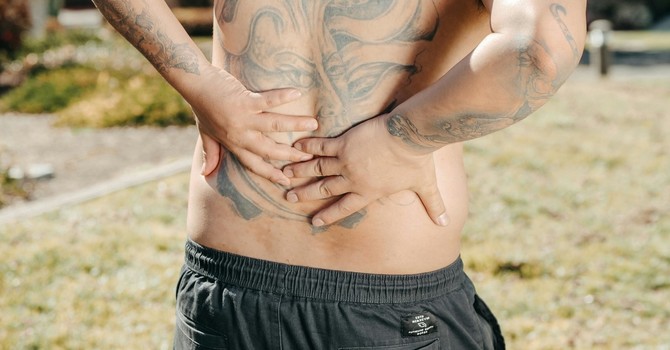
Whether you’re an avid gym-goer or even if you’re an inconsistent exerciser, you’ve probably experienced muscle soreness after a workout at some point in the past.
If so, have you ever wondered why your muscles are sore after a workout?
This post-exercise muscle soreness is referred to as delayed onset muscle soreness (DOMS). It’s a normal phenomenon after a tough session of exercise. It usually begins 24-48 hours after the workout and can last anywhere between 48-72 hours.
The main symptoms of muscle soreness are:
- Tenderness and pain in the muscles
- Stiffness and reduced range of motion around the affected joints
- Aching in the muscles
What Causes Muscle Soreness?
DOMS is a temporary response to muscle damage. When you complete a tough workout, such as some heavy resistance training exercises or a high-intensity interval training session, you cause tiny tears in the muscles, known as micro-tears.
This damage causes inflammation of the muscle and surrounding connective tissue because of the increased blood into the area.
This increased flow of blood enables a variety of important immune cells to flood the area in an attempt to resolve the damage. This sensitizes the free nerve endings in the area, which causes increased pain signalling to the brain. These pain signals help to prevent you from doing anything that will cause further damage to the muscles.
It’s predominantly the eccentric phase of each exercise that is associated with DOMS (e.g.- the descending part of a bicep curl or the second half of a barbell squat).
Eccentric training causes transient damage to the muscles that stimulates an adaptive response. When the muscle rebuilds itself, it grows in size and strength so that you are able to handle heavier loads in the future.
Compared to concentric training, eccentric training causes more damage to the structural elements of your muscles and connective tissue. It also results in a stronger inflammatory response, which contributes to increased DOMS.
How Can You Deal With Muscle Soreness?
Although DOMS often indicates that your body is adapting to your tough workouts and gaining strength, it doesn’t make it any more enjoyable.
Luckily, there are plenty of remedies you try yourself to reduce swelling and relieve your muscle soreness. We’ll give you a few ideas that have been proven to help.
How To Help Your Sore, Aching Muscles:
- Active recovery - this involves performing some light exercise, such as walking, yoga, or stretching, in the days following your workout. This can help to increase blood flow to the damaged muscles to speed up the recovery process.
- Ice packs - applying a soothing ice pack to your sore muscles can reduce swelling and relieve pain.
- Take an Epsom salt bath - Epsom salts contain essential minerals, including magnesium, which can help to relax the muscles and enhance blood flow.
- Stay hydrated - drinking lots of water while you’re experiencing DOMS helps to keep your cells functioning optimally.
- Eat lots of protein - this essential macronutrient is required for your body to grow new muscle and repair existing muscle fibers so it’s important that you consume adequate amounts of protein around your workouts.
Should You Be Getting Frequent Muscle Soreness?
Muscle soreness is somewhat normal. If you’ve completed a particularly challenging training session, it’s likely that your muscles will have sustained some damage due to the mechanical stress. The soreness is a natural adaptive response to this stress.
But if you are getting severe DOMS after every workout, it might be an indication of overtraining. In this case, you may need to reduce the frequency and/or intensity of your training sessions to allow your muscles adequate time to recover.
The following situations may indicate that there is something more serious going on:
- If your pain doesn’t disappear after three days.
- If your pain is so severe that you are struggling to perform your usual daily tasks.
- If your legs are extremely swollen or there are signs of red or purple discoloration to the skin
- If you are experiencing severe cramps in your muscles.
If you experience any of these symptoms, then you should contact our office. We will work hard to determine the cause of your symptoms and provide the appropriate treatment so you can start feeling better right away.





